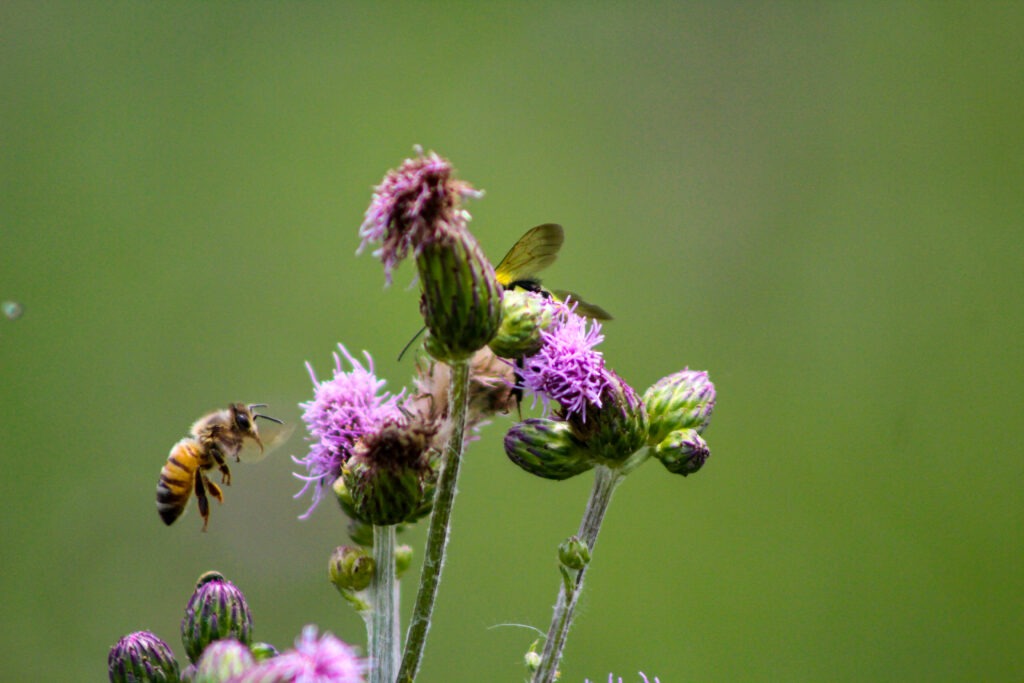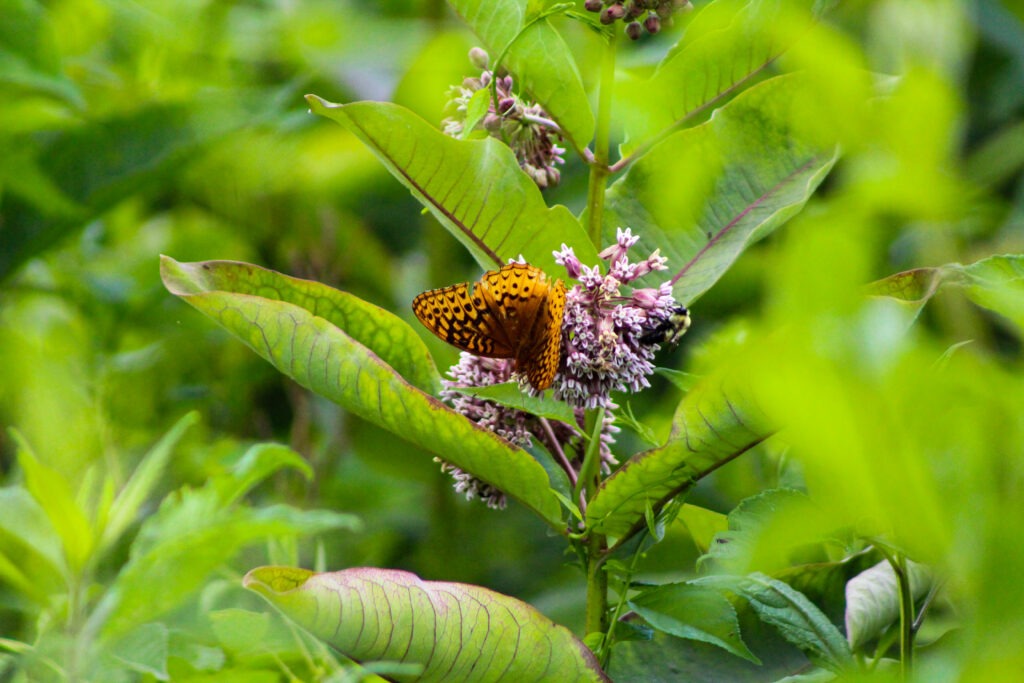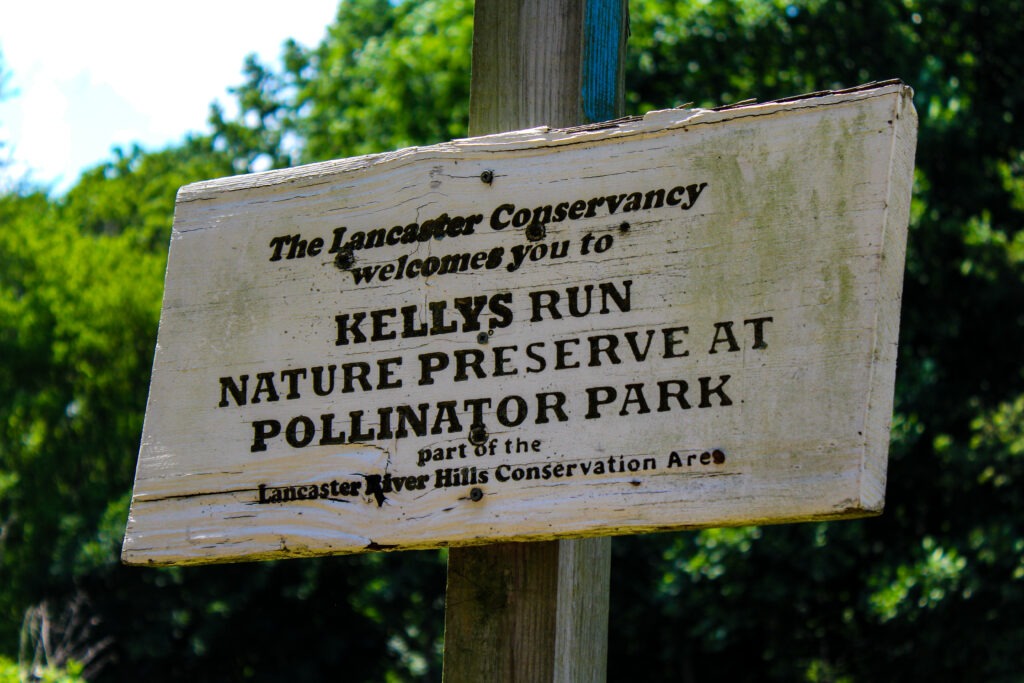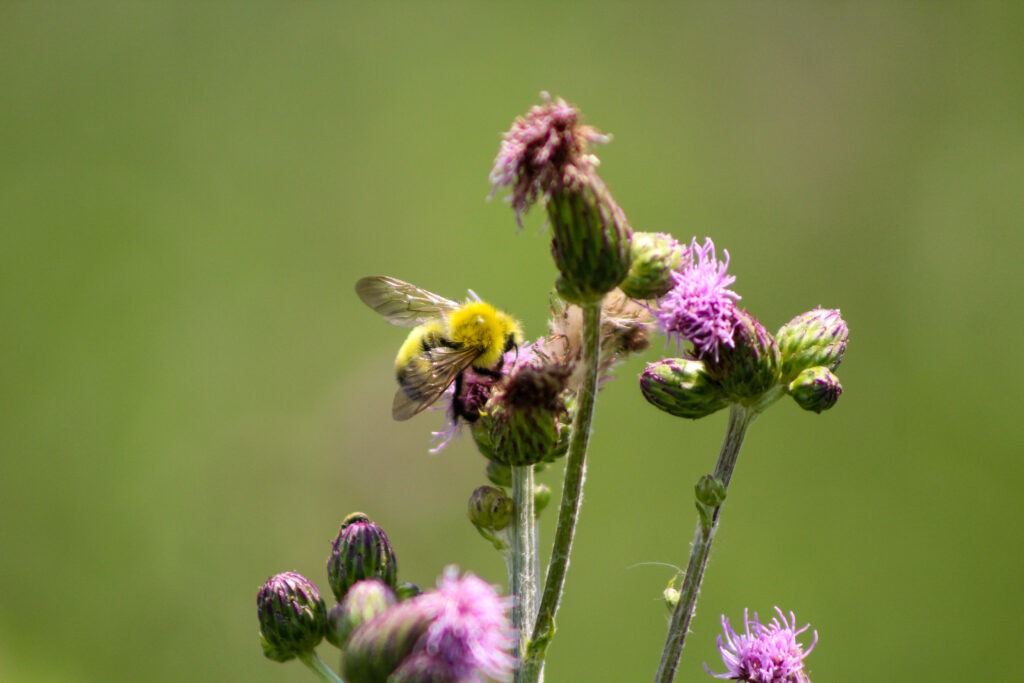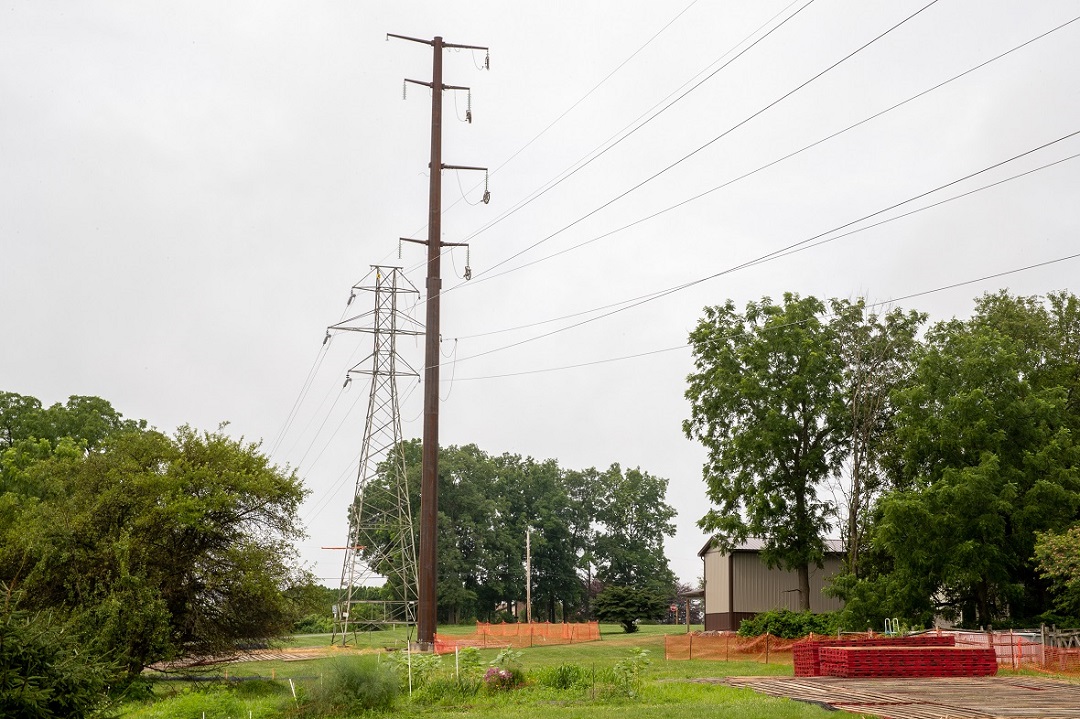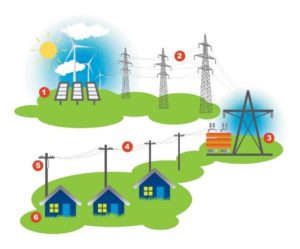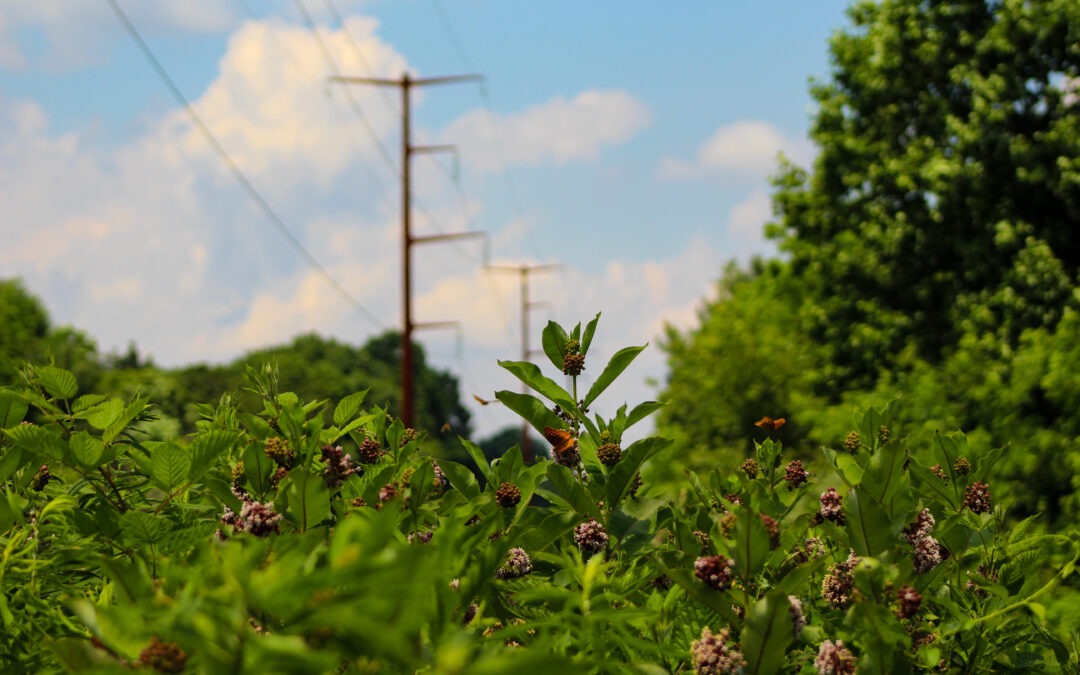
Powering Pollinators: PPL Electric Utilities keeps pollinators buzzing in Lancaster
Bees buzzed from flower to flower while butterflies and moths gently floated from one plant to another on a recent sunny day within PPL Electric Utilities’ transmission line corridor that crosses Lancaster Conservancy’s Kellys Run Preserve. The thriving habitat, which was alive with blooms of frost aster, bull thistle, milkweed and sunflowers, was part of a collaborative effort between PPL Electric and Lancaster Conservancy to expand the preserve’s pollinator park and benefit a wide array of pollinator species.
The 460-acre preserve, one of 50 Lancaster Conservancy manages, began restoration efforts to turn 12 acres of the preserve into a pollinator park in 2021. And, while PPL Electric was working on a rebuild of a nearly century-old transmission line that runs through the preserve that same year, the utility took the opportunity to help expand the Conservancy’s pollinator meadows into the company’s right-of-way area under the power lines by nearly two and a half acres.
“This collaborative approach [between PPL Electric and Lancaster Conservancy] has proven fruitful at both Safe Harbor and Kellys Run nature preserves,” said Avery Van Etten of Lancaster Conservancy. “Conservancy-led habitat restoration projects were designed in consideration of PPL Electric needs, while the replacement of PPL Electric transmission infrastructure within the project area was approached in a manner considerate of the active restoration projects on Conservancy preserves.”
The continued collaboration is a win-win as both organizations are invested in protecting and enhancing the natural environment. In addition to helping the VIPs (very important pollinators), the pollinator-friendly plants can help to save PPL Electric costs by requiring less vegetation management and treatment within the power line corridor. Plus, the lower-profile plants also have the benefit of providing enhanced visibility when it’s time to inspect those power lines. By using the right mix of native plants within its right-of-way areas, PPL Electric can enhance the environment while improving reliability and lowering costs.
“From the collaborative approach to different project needs, to everyday activities such as invasive species management by Lancaster Conservancy and vegetation management work being performed by PPL Electric and its contractors, enhanced communication over the past five years has helped continue to build a working relationship between Lancaster Conservancy and PPL Electric,” added Van Etten.
It’s no secret that pollinators are a key piece of the puzzle when it comes to the environment and human life. In fact, according to the USDA, more than 150 common food crops in the US depend on pollinators including almost all fruit and grain crops.
“Flowering plants assist in carbon sequestration and produce the oxygen we breathe,” said Van Etten. “Flowering plants also purify water, prevent erosion and reduce sedimentation, all of which help contribute to a healthy and functioning ecosystem. Without pollinators such as honeybees, bats, butterflies and slugs, the ecosystem we rely on for day-to-day life would collapse.”
PPL Electric has developed numerous partnerships with conservancies around northeastern and central Pennsylvania to provide pollinator-friendly plants and seeds for easements, similar to what’s taking place in Kellys Run Preserve. In addition to taking action around the region, PPL Electric’s Community Roots Program has also contributed to the planting of more than 100 acres of native pollinator-friendly wildflowers thanks to seed donations to schools, community organizations and environmentally focused groups since 2017.
If you’re looking to join PPL Electric and Lancaster Conservancy in helping these very important pollinators, Van Etten says there are ways to create pollinator-friendly habitats where you live.
“Lancaster Conservancy protects and restores large tracts of natural lands, but we need our community to help create wildlife habitat in other places, especially in developed areas,” said Van Etten. “Birds, insects, and other animals need corridors of connected habitat to thrive. The Conservancy has resources to help. Visit lancasterconservancy.org/habitat to learn more about how you can help create pollinator habitat in your own flowerpot, yard or community.”
And, to learn more about all of the ways PPL Electric is helping to protect and enhance the environment, visit pplelectric.com/environment.

